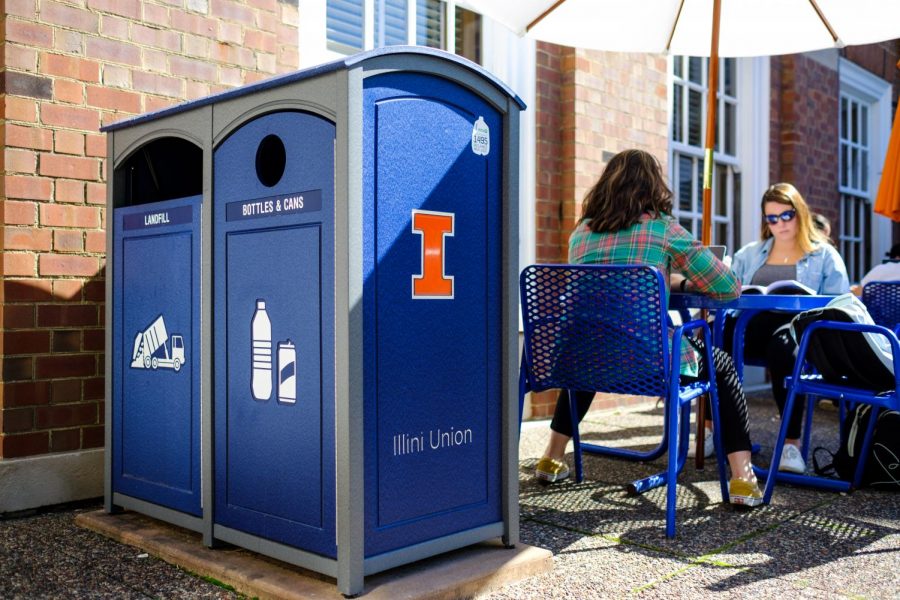Glass recycling finds funding on campus
Glass recycling finds funding on campus
Recycling and trash bins lie near the west courtyard of the Union on Wednesday. The University offers more than 3,000 recycling bins around campus including glass deposits.
BY LUIS VELAZQUEZ, STAFF WRITER
OCTOBER 10, 2019
A glass recycling bin located in the Illini Union Courtyard surprised associate director of Facilities and Services for Sustainability Morgan White because she thought the University does not partake in recycling glass. Although many bins around campus only have places for plastic, paper, cardboard and scrap metal to be recycled, the University Housing Dining Services still funds glass recycling.
More than 3,000 recycling bins are available throughout campus in dorms, as well as public facilities where plastic bottles, paper, cardboard and scrap metal can be recycled.
“A few times in the past 30 years, we have reviewed the materials that go through the F&S Waste Transfer Station, and we found that there is a very small amount of glass,” White said in an email. “Recently, Waste Characterization Studies were done for (eight) buildings on campus, measuring the exact amount of waste materials produced by each of those buildings.”
According to White, Dave Guth, interim senior associate director of operations at the Illini Union, said, “This is probably one of the last remaining fiberglass bins we have in the building. The old containers had a separate stream for glass bottles and aluminum cans/plastic bottles.”
White said although small amounts of glass come from campus buildings, the University Housing’s Dining Services have chosen to fund glass recycling.
According to the Waste Management and Recycling website, “The University ‘diverts about 30% of its waste from landfills.’”
With help from the F+S Waste Management Department, the University is aiming to reach its goal of reducing the total amount of waste sent to landfills. The University’s objective is to obtain a Zero Waste Campus environment, as indicated in the Illinois Climate Action Plan.
The Waste Transfer Station, a facility for recycling goods, operates daily compacting and shipping trash to a landfill. However, the recyclables that come from campus are manually sorted and deposited into storage bins. After being compressed in a different bin, they are sold to recycling companies.
Nichole Millage, environmental sustainability specialist for the City of Champaign Public Works Department, said the city offers glass recycling, but does not actually collect or process trash. This job is done by other companies, such as private solid waste haulers.
“The City manages a multifamily recycling program (Feed the Thing), but the pick-up services are contracted to a private hauler (Midwest Fiber Recycling in Urbana),” Millage said in an email. “Per City Code, all licensed residential solid waste haulers in the City of Champaign are required to accept glass for recycling from residents.”
Lesly Ortega, sophomore in LAS, said she believes since the University does not tell students to recycle, the majority do not properly recycle trash. However, Ortega is glad the University offers this option in general.
“I feel like glass is used a lot more now,” Ortega said. “A lot of the refreshments sold in vending machines or in stores are accompanied with glass, so instead of it being thrown away, it should be recycled.”






